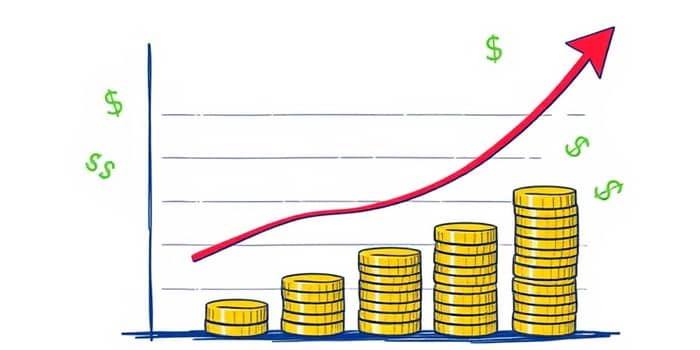Loan amortization provides a systematic way to repay a fixed-rate loan with consistent, predictable monthly payments. It breaks down every installment into interest and principal components, allowing borrowers to understand precisely how their balance evolves. Whether you’re financing a car, funding education, or investing in real estate, mastering this concept lays the foundation for effective debt management and financial planning. Through detailed explanations, real-world examples, and practical tips, you’ll gain a deeper appreciation of each payment’s impact and discover strategies to reduce costs and achieve long-term stability.
What Is Loan Amortization?
Loan amortization describes the method by which a borrower pays back a loan using regular payments that simultaneously cover interest and principal. In a fully amortized loan, no balloon payment is due at the end; instead, the loan balance reaches zero after the final payment. This approach contrasts with interest-only loans, where payments initially cover only interest and leave the principal untouched until the end of the term.
Amortized loans come in various forms, catering to different financial needs and goals. Common options include:
- Auto loans for vehicle financing
- Education loans for student tuition
- Home equity loans and lines of credit
- Fixed-rate mortgages for home purchases
Each of these instruments employs an amortization schedule that outlines how each payment contributes toward covering interest charges and gradually reducing the principal balance until the loan is paid off in full.
How Loan Amortization Works
With each payment on an amortized loan, two things occur simultaneously. First, you pay the interest that has accrued since your last installment. Second, you pay down a portion of the principal—the original amount borrowed. Early in the loan term, a larger slice of each payment goes toward interest because the outstanding balance is still high. As the balance decreases, the interest component shrinks, allowing more of your payment to go toward principal reduction.
The shifting breakdown between interest and principal follows a predictable pattern. In month one, your interest charge is calculated by multiplying the annual rate by the outstanding principal, then dividing by 12. The remainder of your monthly payment automatically applies to the principal. By month twelve, the interest portion will be lower because the principal has been reduced by previous payments. This compounding effect accelerates as the loan matures, highlighting the benefit of sticking to the schedule or making extra payments.
Calculating Your Monthly Payments
To determine the fixed monthly payment necessary to amortize a loan fully, financial professionals use a precise mathematical expression. The formula to calculate your monthly payment (M) is:
M = P × [ r(1 + r)^n ] / [ (1 + r)^n – 1 ]
Where:
- P = Principal, the initial amount borrowed
- r = Monthly interest rate (annual rate ÷ 12)
- n = Total number of payments (loan term in years × 12)
Once you solve for M, you gain a fixed figure that stays consistent for the life of the loan. Each month, the interest portion equals the outstanding balance multiplied by r. Subtract this from M to find the principal portion. While the interest portion declines over time, the principal portion increases correspondingly, ensuring the loan amortizes according to the predetermined schedule.
Accurate calculation of your monthly obligation helps you budget effectively and compare loan offers. Many online calculators automate this process, but understanding the underlying math empowers you to verify results and anticipate financial commitments.
Example Amortization Schedule
Let’s illustrate how payments shift over the course of a loan with an example. Suppose you borrow $50,000 at a 6% annual interest rate, to be repaid over six years (72 months). Applying the amortization formula yields a monthly payment of approximately $811.68. The first several rows of your amortization schedule would appear as follows:
This breakdown reveals how the interest portion steadily decreases while the principal portion grows. By the final payment, nearly the entire amount goes toward principal, completing the loan payoff. Reviewing such a schedule helps borrowers plan strategically, perhaps by targeting higher principal contributions earlier to save on total interest paid.
Understanding Amortization Schedules
An amortization schedule is more than just a table; it’s a roadmap for your repayment journey. It displays each payment number, the fixed payment amount, the interest and principal components, and the remaining balance. Key elements include:
- Loan Amount, Interest Rate, Loan Term, Total Payments
Tracking these figures offers insight into how every dollar you pay contributes to debt reduction. As you progress, you can spot opportunities for making additional payments. By applying extra funds toward principal, you shorten the term and reduce interest costs. Many borrowers use this tactic to build equity more quickly or to pay off high-interest loans sooner, optimizing their financial outcomes.
Amortization vs. Loan Term
While the amortization schedule defines the structure of your payments, the loan term specifies the total lifespan of the loan agreement. In some arrangements, borrowers might choose an amortization period longer than the loan term. This scenario results in lower monthly payments but requires a larger final balloon payment to clear the remaining balance. Recognizing this distinction prevents unwelcome surprises and allows for planning around potential large payments. Always review your loan documents closely to ensure you understand both the schedule and term requirements, avoiding confusion and stress as maturity approaches.
Key Benefits and Considerations
Amortized loans appeal to many borrowers due to their clarity and predictability. By knowing exactly what you owe each month, you can allocate funds for other priorities without uncertainty. Key advantages include:
- Plan payments and budget effectively using fixed installments.
- Additional payments reduce the principal faster and minimize interest.
- Predictable schedules support long-term financial goals by mapping out your debt-free date.
However, borrowers should also consider the interest-heavy nature of early payments. While some may feel discouraged by the slow initial reduction in principal, understanding this dynamic encourages strategic overpayments or refinancing at favorable rates. Combining knowledge of amortization mechanics with disciplined financial habits empowers you to take control of debt and pursue broader wealth-building strategies.
Conclusion
Mastering loan amortization equips you with the ability to dissect payment structures, forecast financial obligations, and implement strategies that reduce costs. Armed with this understanding, you can evaluate loan offers confidently, tailor repayment plans to your circumstances, and accelerate your path to becoming debt-free. Embrace the clarity of amortization schedules, leverage additional payments when feasible, and harness the power of informed decision-making to achieve lasting financial health.
References
- https://www.fe.training/free-resources/lbo/loan-amortization/
- https://www.investopedia.com/terms/a/amortization.asp
- https://www.americanexpress.com/en-us/credit-cards/credit-intel/loan-amortization/
- https://cis.temple.edu/~anwar/CIS2305Spring2014/LabAssignments/LabAssignment3/loancalculator.html
- https://www.investopedia.com/terms/a/amortized_loan.asp
- https://www.youtube.com/watch?v=lkNJvsy0qU8
- https://www.youtube.com/watch?v=2IgoH4EaBD0
- https://www.calculator.net/amortization-calculator.html










